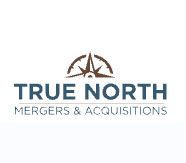Understanding Capital Structure in M&A: A Guide for Buy-Side Clients

True North Mergers & Acquisitions
April 9, 2025

From expanding portfolios to acquiring valuable assets and entering new markets, mergers and acquisitions offer unique opportunities for buyers. However, the right financial strategy is critical to ensuring a profitable, sustainable investment. To set yourself up for long-term success, it’s imperative to understand the nuances of capital structure debt and equity in M&A transactions.
Understanding Financing Options
When acquiring a business, determining how to finance the purchase is one of the most important things to consider. The choice between a loan and an equity investment can significantly impact both the risk and return in any deal.
How Different Financing Options Impact Returns
- Debt financing: Occurs when a company or individual borrows money from a lender and slowly repays the principal amount plus interest over time. This financing is often in the form of a loan. Taking on a loan typically results in higher returns if the business performs well, as there are no investors with whom to share profits.
- Equity financing: Entails selling ownership stakes in the company with no obligation to repay the invested amount, but investors share in future profits. Should you choose to work with investors, you can reduce financial strain. However, a partnership may reduce future gains, as investors will expect to see returns on their capital.
- Hybrid structure: It’s possible to blend debt and equity components, which can provide greater flexibility.
Loans vs. Equity Investments
When financing a deal, one option is to take out a loan. This approach allows you to retain full ownership of the acquired business. However, it also comes with the responsibility of making regular repayments along with interest. Choosing a loan can be a smart strategy if the acquired business has a strong and predictable cash flow.
Another option is to bring in investors, which can significantly reduce the personal financial burden. However, it is important to note that this also means relinquishing some control, as you would no longer be the sole owner. Equity investments are popular for those pursuing lower-middle-market deals or looking to leverage private equity partnerships.
More About Loans
If you are considering debt financing, there are several lending options to review, including:
Traditional Bank Loans
Banks typically offer competitive interest rates and structured repayment terms. However, securing such a loan often requires strong financials, significant collateral, and a solid acquisition plan.
Seller Financing
In many mergers and acquisitions, the seller may agree to finance a portion of the purchase price. This can reduce the immediate capital needed, making the deal more affordable.
Using Business Assets as Collateral
Taking an asset-based lending approach can allow you to use the acquired company’s assets as security for financing. Real estate, equipment, and even inventory may be utilized and could lead to more flexible lending terms. However, the risk is increased if the business doesn’t perform as well as anticipated.
A Deeper Dive Into Investment Capital
If you’re interested in pursuing investment capital, several options also exist, each with unique advantages and considerations.
Private Equity Firms
Private equity (PE) groups specialize in acquiring and growing businesses, allowing the PE group to bring valuable expertise and resources to a merger or acquisition. However, these firms often require a significant ownership stake in the company, which may impact your control over the company.
Corporate Investors
Large corporations often look for strategic acquisitions and may offer funding in exchange for the opportunity to integrate a complementary business into their own portfolios. This route can provide valuable resources but can restrict your ability to make independent operational decisions.
Employee Ownership Options
In some cases, buyers may be able to leverage financing from an Employee Stock Ownership Plan (ESOP) to gradually transfer ownership while maintaining business continuity.
Key Questions to Consider
1. Can Your Cash Flow Support Loan Payments?
If you’re considering a bank loan, it is important to conduct a detailed cash flow analysis. If the loan payments exceed sustainable revenue, repayment can quickly become challenging or nearly impossible.
2. What Assets Do You Have for Collateral?
While intangible assets can hold significant value, lenders often require tangible assets for securing a loan. Before pursuing this option, document the tangible business assets that you have available.
3. How Will Financing Impact Growth Plans?
The amount of debt in your capital structure may limit reinvestment opportunities, while equity financing likely introduces new decision-makers into the company. When selecting a capital structure during a merger or acquisition, consider your long-term strategic goals and how each potential structure will align with them.
Get the Right Capital Strategy
By making informed, intentional decisions, you can secure acquisitions that align with your investment goals and financial capabilities. Connect with Michael Hubsmith, True North Mergers & Acquisitions President, to learn more about structuring the right capital strategy in a merger or acquisition transaction.
Subscribe to our Newsletter
Sign up for the latest industry insights from True North Mergers & Acquisitions.




